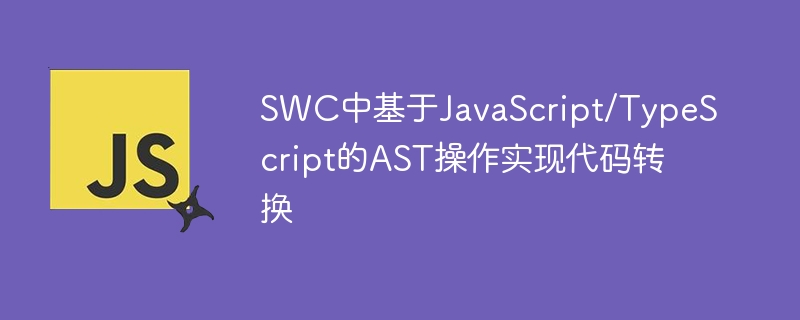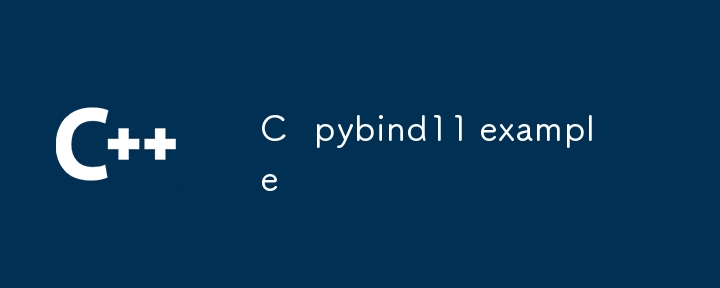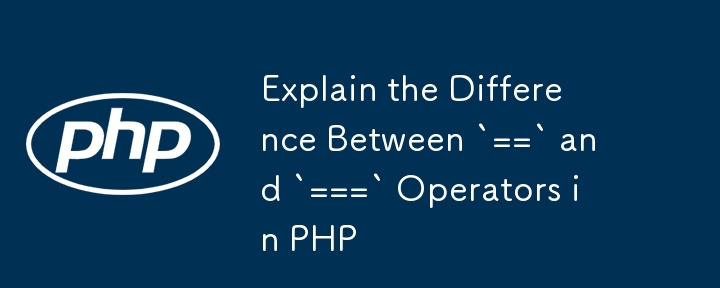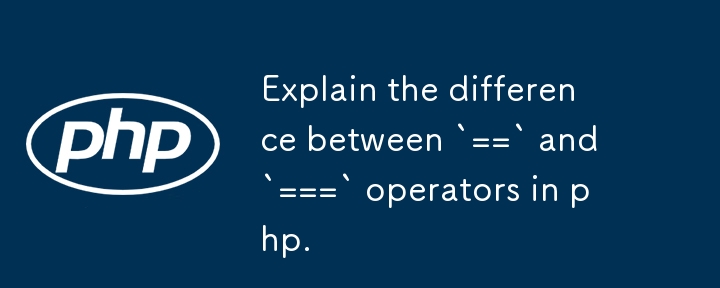Found a total of 10000 related content

How to Convert ft to m in Excel – Step by Step Formula Guide
Article Introduction:Microsoft Excel is a powerful tool known for its versatility and ability to simplify complex computing. One task that users often need to accomplish is to convert units of measurement—such as converting feet (ft) to meters (m). This guide will introduce a variety of methods and explain in detail the basic operations and advanced techniques for doing such conversions in Excel to help you improve efficiency and accuracy. Core points: 1 foot equals 0.3048 meters, Excel can easily achieve this conversion through the CONVERT function. Use the formula =CONVERT (value, "ft", "m") to complete feet to meters quickly and accurately
2025-09-09
comment 0
902

How to Quickly Build a Chat App with Ratchet
Article Introduction:This tutorial explores Ratchet, a PHP library facilitating WebSocket communication. WebSockets enable real-time, bi-directional data exchange between browsers and servers, eliminating the need for constant polling.
Key Features:
Swift Installation
2025-02-16
comment 0
365

Code conversion based on JavaScript/TypeScript in SWC
Article Introduction:This article discusses how to use JavaScript/TypeScript for code conversion in SWC. Although there is currently no official JS/TS plug-in API, by deeply understanding and manipulating abstract syntax tree (AST), developers can use the parse and transform methods of the @swc/core library to insert custom logic between code parsing and generation to achieve flexible code conversion requirements. The article will use specific examples to demonstrate how to modify AST nodes to achieve the expected conversion effect, providing practical guidance for developers who want to optimize JS/TS code in the SWC ecosystem.
2025-08-20
comment 0
429

What are the differences between == (loose comparison) and === (strict comparison) in PHP?
Article Introduction:In PHP, the main difference between == and == is the strictness of type checking. ==Type conversion will be performed before comparison, for example, 5=="5" returns true, and ===Request that the value and type are the same before true will be returned, for example, 5==="5" returns false. In usage scenarios, === is more secure and should be used first, and == is only used when type conversion is required.
2025-06-19
comment 0
593

Social Logins in PHP with HybridAuth
Article Introduction:Many modern websites allow users to log in through their social network accounts. For example, the SitePoint community allows users to log in with their Facebook, Twitter, Google, Yahoo, or GitHub accounts without registering for a new account.
This tutorial will introduce HybridAuth - a PHP library that simplifies the construction of social login capabilities.
HybridAuth acts as an abstract API between applications and various social APIs and identity providers.
Key Points
HybridAuth is a PHP library designed to simplify the integration of social login into your website, acting as between your application and various social APIs
2025-02-18
comment 0
770

Managing Dates and Times in JavaScript Using date-fns
Article Introduction:date-fns: A lightweight, powerful JavaScript date processing library
Tired of the verbose and inconsistency of JavaScript's native date methods? The date-fns library provides a simple and comprehensive tool set for easy management of dates and times in JavaScript. It is a lightweight Moment.js alternative that provides a range of methods for performing common tasks such as date formatting, internationalization, date comparison, date sorting, finding the interval between two dates and time zone conversion .
The main advantages of date-fns:
Lightweight and functional: date-fns provides a lighter functional alternative than Moment.js
2025-02-10
comment 0
500

C pybind11 example
Article Introduction:First install pybind11, then write the C function and export it with PYBIND11_MODULE, then compile it through CMakeLists.txt configuration, use CMake to build and generate a shared library, and finally import the module in Python and call the C function to fully realize the interaction between C and Python, and support automatic conversion of classes and STL types, suitable for performance acceleration scenarios.
2025-07-25
comment 0
404

Go language: Detailed explanation of the conversion method of io.Reader to string
Article Introduction:This article explores in-depth ways to convert io.Reader streams to strings in Go, from the efficient strings.Builder scheme recommended by Go 1.10, to the general implementation of the standard library bytes.Buffer, and potential but dangerous optimization paths for the unsafe package. The article highlights the tradeoffs between efficiency, security, and code maintainability, and provides detailed code examples and best practice suggestions to help developers choose the best conversion strategy for their scenarios.
2025-09-04
comment 0
764

Simplify data encryption in PHP using the JustEncrypt library
Article Introduction:When developing a PHP project that requires high-security data transfer, I encountered a challenge: how to maintain consistency of encryption algorithms between different PHP versions while ensuring performance and security. After some exploration, I discovered the JustEncrypt library, an encryption solution designed specifically for PHP that not only solved my problem, but also provided great convenience.
2025-04-18
comment 0
1202

How to solve the complex problem of PHP geodata processing? Use Composer and GeoPHP!
Article Introduction:When developing a Geographic Information System (GIS), I encountered a difficult problem: how to efficiently handle various geographic data formats such as WKT, WKB, GeoJSON, etc. in PHP. I've tried multiple methods, but none of them can effectively solve the conversion and operational issues between these formats. Finally, I found the GeoPHP library, which easily integrates through Composer, and it completely solved my troubles.
2025-04-17
comment 0
1068

Time Processing Best Practices: UTC and Time Zone Conversion
Article Introduction:This article aims to illustrate best practices for handling dates and times in applications, especially when passing time information between the UI and the backend. The core idea is to stick to the use of UTC as a common standard for data storage and exchange, and to perform time zone conversion only when user interface display or specific business logic requires it. This article will dive into how to achieve this using the Instant and ZonedDateTime classes in the java.time library, and emphasizes avoiding fuzzy time zone abbreviations.
2025-09-09
comment 0
760

Demystifying PHP's Type Juggling: A Deep Dive into `==` vs. `===`
Article Introduction:Using === instead of == is the key to avoiding the PHP type conversion trap, because === compares values and types at the same time, and == performs type conversion to lead to unexpected results. 1.==The conversion will be automatically performed when the types are different. For example, 'hello' is converted to 0, so 0=='hello' is true; 2.====The value and type are required to be the same, avoiding such problems; 3. When dealing with strpos() return value or distinguishing between false, 0, '', null, ===; 4. Although == can be used for user input comparison and other scenarios, explicit type conversion should be given priority and ===; 5. The best practice is to use === by default, avoid implicit conversion rules that rely on == to ensure that the code behavior is consistent and reliable.
2025-07-31
comment 0
1044

How to create a responsive image comparison slider with CSS?
Article Introduction:To create a responsive image comparison slider, you must first build an HTML structure containing the front and back images and separation bars; 2. Use CSS to set relative units and object-fit to ensure layout adaptability; 3. Control the display range of the "before contrast" pictures through width or clip-path; 4. Add JavaScript to achieve sliding interaction between mouse and touch events; 5. Optimize styles for mobile devices and ensure touch support, and finally realize a responsive image comparison function that does not require a third-party library, is compatible with modern browsers, and fully supports desktop and mobile user interaction.
2025-08-04
comment 0
324

Explain the Difference Between `==` and `===` Operators in PHP
Article Introduction:In PHP, the main difference between == and == is the strictness of type checking. The == operator performs type conversion when comparing, while === strictly checks the values ??and types without conversion. For example: "5"==5 returns true but "5"==5 returns false; 0==false is true but 0===false is false; null===0 is always false. You should use == when the type is independent or requires flexible comparison, such as user input processing; if the type must be consistent, such as the detection function returns false, validation null or boolean flag. It is recommended to use === first to avoid logic caused by type conversion
2025-07-09
comment 0
287

How to use PHP to realize AI image style conversion PHP image special effects automation processing
Article Introduction:To use PHP to implement AI image style conversion, you need to follow the following steps: 1. Select a suitable AI model, such as CycleGAN or StyleTransfer, and you can use the trained model or train it yourself; 2. Deploy the model to the server, such as TensorFlowServing or TorchServe; 3. PHP calls the AI model and execute it through shell_exec or Symfony/Process components; 4. Use GD library or Imagick extension to perform image preprocessing; 5. Color adjustment, sharpening and other post-processing of the conversion results; 6. Display the results through HTML, CSS, and JavaScript. PHP acts as a bridge and is responsible for connecting
2025-07-25
comment 0
466

Explain the difference between `==` and `===` operators in php.
Article Introduction:The difference between == and == in PHP is that: == is a loose comparison, only the values ??are compared and type conversion is performed, for example, 0=="0" is true; while === is a strict comparison, which compares both values ??and types, such as 0==="0" is false. Common type conversion rules include converting a string to a number when compared to a number, converting a Boolean value to 0 or 1, etc. It is recommended to use === first to avoid unexpected errors. For example, when checking the return value of strpos(), you must use === to determine whether it is false.
2025-07-12
comment 0
1036

In-depth analysis of pixel operation repeatability and type system limitations in Go image package
Article Introduction:This article discusses the reasons for the duplication of code in the Go language standard library image package (such as the Opaque() method). The core lies in Go's type system's strict restrictions on conversion between different slice types of underlying memory representations, and even if the logic is the same, it cannot be directly abstracted. This leads to a specific type of implementation that has to be adopted to maintain high performance, while pointing to the challenge of lack of a general solution before Go introduced generics.
2025-08-08
comment 0
541

How to measure distance in AutoCAD?
Article Introduction:The method to quickly measure the distance between two points in AutoCAD is to use the "Distance" command (DI), click the starting point and end point to display the values, but pay attention to unit settings, capture opening and coordinate system accuracy. If the object is an arc or polyline, it can be decomposed and measured one by one or viewed through the "Properties Panel". For continuous paths, it is recommended to use "Polyline Edit" to merge the line segments and view the total length, or use the "Measure Path" function to track the accumulated distance in real time. Issues that are easy to ignore during measurement include: coordinate system deviation, endpoint capture not enabled, unit conversion errors and viewport proportional influence. It is recommended to operate in the model space to ensure accuracy.
2025-07-08
comment 0
631

Mastering User Input Validation with the PHP do-while Loop
Article Introduction:PHP input validation using a do-while loop ensures that input prompts are executed at least once and requests are repeated when the input is invalid, suitable for command-line scripts or interactive processes. 1. When verifying the input of numerical values, the loop will continue to prompt until the user enters a number between 1 and 10. 2. When verifying strings (such as mailboxes), remove spaces through trim() and use filter_var() to check the validity of the format. 3. The menu is selected to ensure that the user enters valid options between 1-3. Key tips include: using trim() to clean input, reasonable type conversion, provide clear error information, and avoid infinite loops. This approach is suitable for CLI environments, but is usually replaced by frameworks or one-time validation in web forms. therefore,
2025-08-01
comment 0
281



















